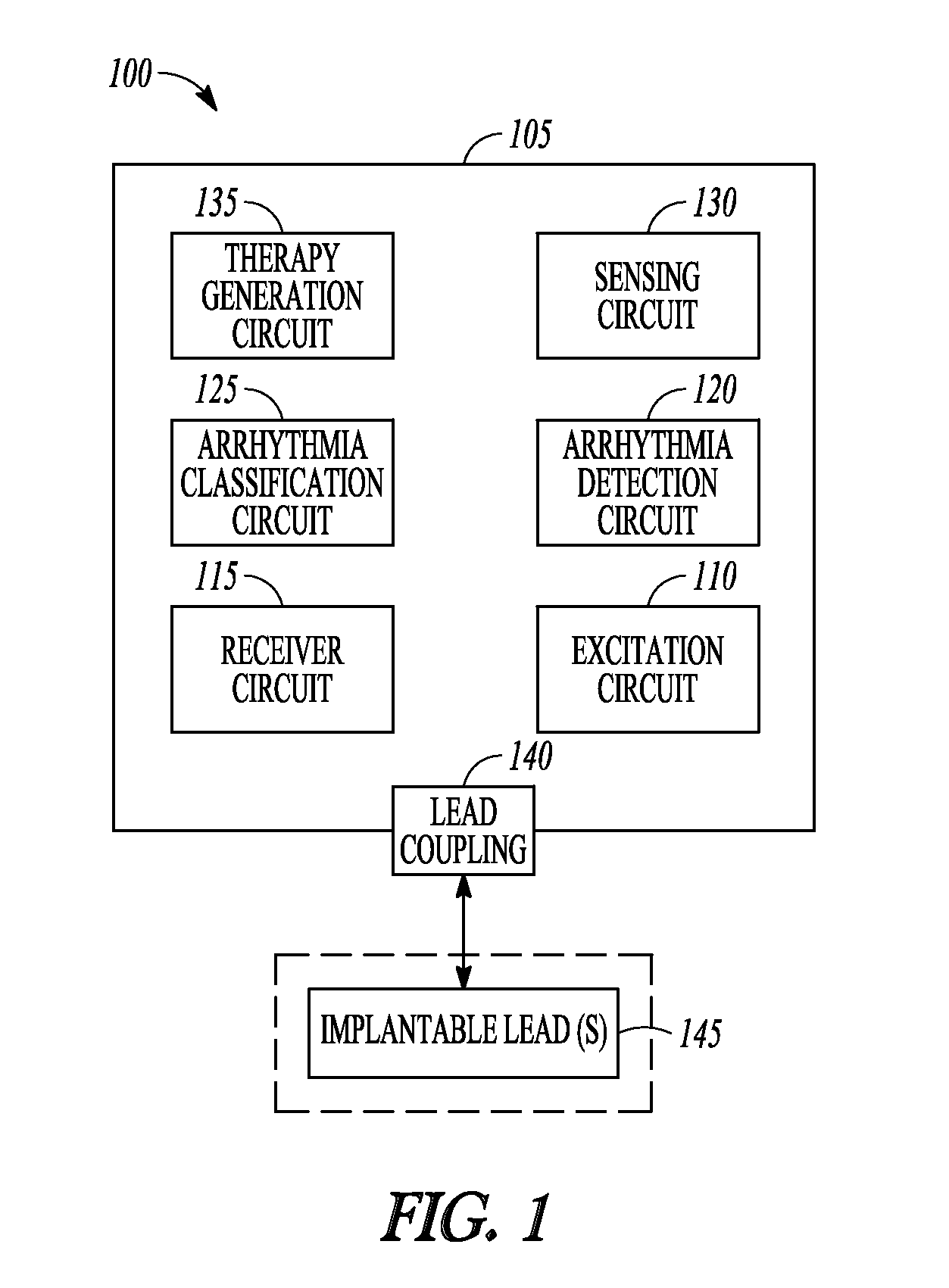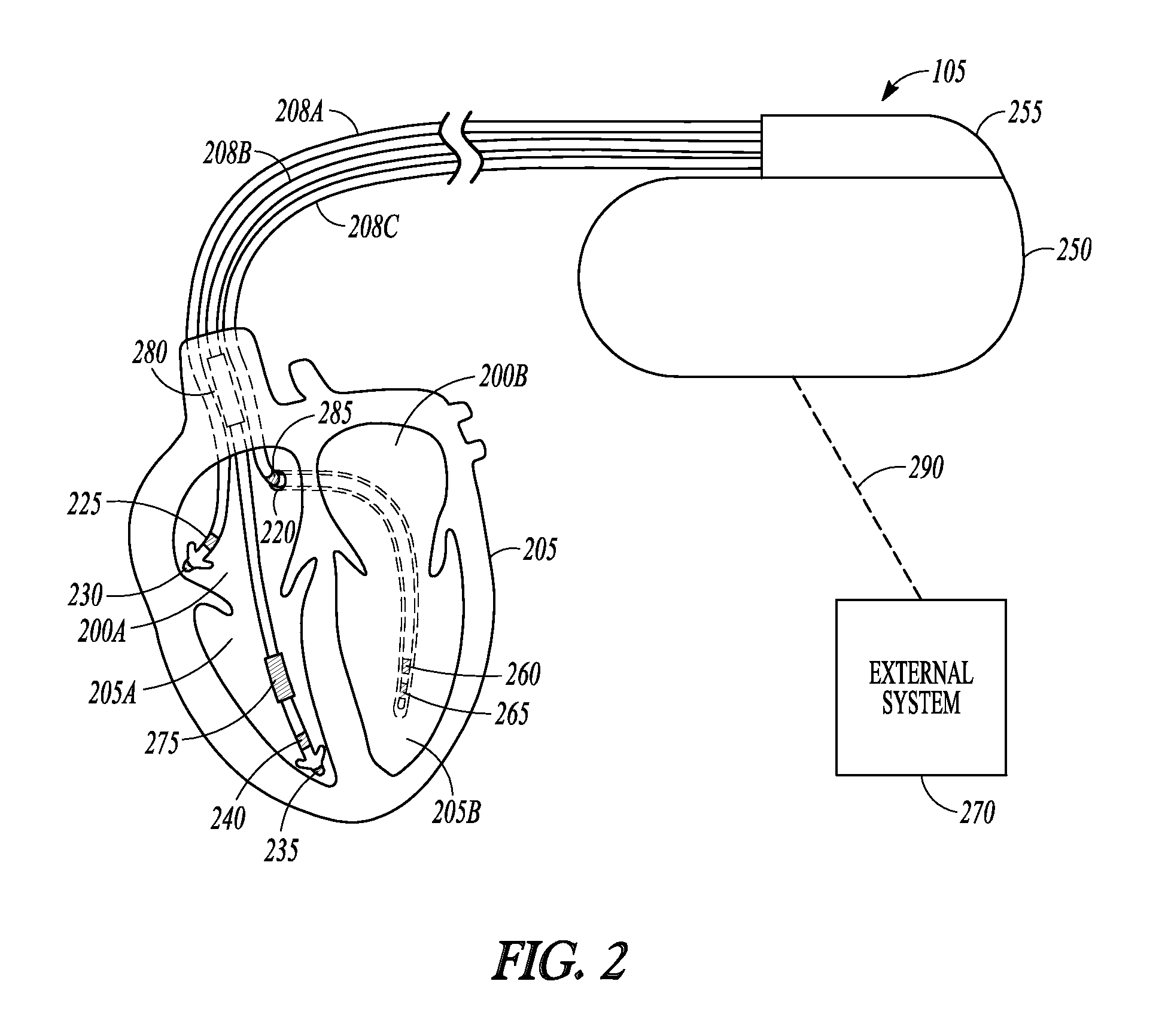Rhythm discrimination using information indicative of lead motion
a technology of lead motion and information, applied in the field of ambulatory medical devices, can solve the problems of ventricular tachyarrhythmia, which can be potentially fatal if left untreated, and the risk of stroke or thromboembolism is heightened, so as to achieve the effect of reducing the risk of stroke or thromboembolism
- Summary
- Abstract
- Description
- Claims
- Application Information
AI Technical Summary
Benefits of technology
Problems solved by technology
Method used
Image
Examples
Embodiment Construction
FIG. 1 illustrates generally an example of a portion of an ambulatory system 100 for rhythm discrimination that can use information indicative of the movement of an implantable lead. The ambulatory system 100 can include an ambulatory medical device, such as an implantable medical device (IMD) 105 that can include an excitation circuit 110, a receiver circuit 115, an arrhythmia detection circuit 120, an arrhythmia classification circuit 125, a sensing circuit 130, or a therapy generation circuit 135. In an example, the IMD 105 can include an interconnection, such as the lead coupling 140, configured to electrically couple the IMD 105 to one or more implantable leads, such as the implantable lead 145. One or more of the excitation circuit 110, a receiver circuit 115, an arrhythmia detection circuit 120, an arrhythmia classification circuit 125, a sensing circuit 130, or a therapy generation circuit 135 can be realized on or within a commonly shared substrate, such as on a commonly-sh...
PUM
 Login to View More
Login to View More Abstract
Description
Claims
Application Information
 Login to View More
Login to View More - R&D
- Intellectual Property
- Life Sciences
- Materials
- Tech Scout
- Unparalleled Data Quality
- Higher Quality Content
- 60% Fewer Hallucinations
Browse by: Latest US Patents, China's latest patents, Technical Efficacy Thesaurus, Application Domain, Technology Topic, Popular Technical Reports.
© 2025 PatSnap. All rights reserved.Legal|Privacy policy|Modern Slavery Act Transparency Statement|Sitemap|About US| Contact US: help@patsnap.com



